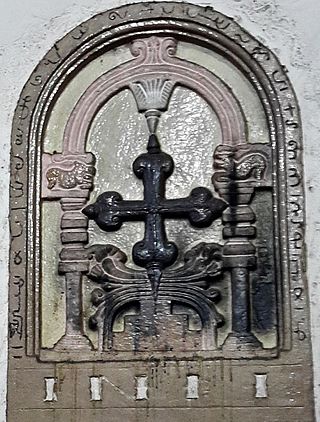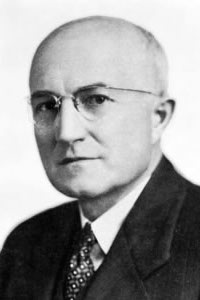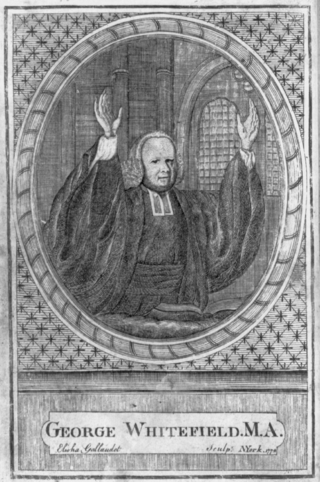This timeline of Christian missions chronicles the global expansion of Christianity through a listing of the most significant missionary outreach events.

Adoniram Judson was an American Congregationalist and later Particular Baptist missionary, who worked in Burma for almost forty years. At the age of 25, Judson was sent from North America to preach in Burma. His mission and work with Luther Rice led to the formation of the first Baptist association in America to support missionaries.

The Karen, also known as the Kayin, Kariang or Kawthoolese, are an ethnolinguistic group of Sino-Tibetan language-speaking peoples. The group as a whole is heterogeneous and disparate as many Karen ethnic groups do not associate or identify with each other culturally or linguistically. These Karen groups reside primarily in Kayin State, southern and southeastern Myanmar. The Karen account for around seven percent of the Burmese population. Many Karen have migrated to Thailand, having settled mostly on the Myanmar–Thailand border. A few Karen have settled in the Andaman and Nicobar Islands, India, and other Southeast Asian and East Asian countries.
A Christian mission is an organized effort to carry on evangelism or other activities, such as educational or hospital work, in the name of the Christian faith. Missions involve sending individuals and groups across boundaries, most commonly geographical boundaries. Sometimes individuals are sent and are called missionaries, and historically may have been based in mission stations. When groups are sent, they are often called mission teams and they undertake mission trips. There are a few different kinds of mission trips: short-term, long-term, relational and those that simply help people in need. Some people choose to dedicate their whole lives to mission.

Christianity has been present in China since the early medieval period, and became a significant presence in the country during the early modern era. The Assyrian Church of the East appeared in China in the 7th century, during the Tang dynasty. Catholicism was one of the religions patronized by the emperors of the Mongol-led Yuan dynasty, but it did not take root in China until its reintroduction by the Jesuits during the 16th century. Beginning in the early 19th century, Protestant missions in China attracted small but influential followings, and independent Chinese churches were also established.

Christianity is India's third-largest religion with about 26 million adherents, making up 2.3 percent of the population as of the 2011 census. The written records of Saint Thomas Christians mention that Christianity was introduced to the Indian subcontinent by Thomas the Apostle, who sailed to the Malabar region in 52 AD.
Protestant Christianity entered China in the early 19th century, taking root in a significant way during the Qing dynasty. Some historians consider the Taiping Rebellion to have been influenced by Protestant teachings. Since the mid-20th century, there has been an increase in the number of Christian practitioners in China. According to a survey published in 2010 there are approximately 40 million Protestants in China. As of 2019, Fenggang Yang, a sociologist of religion at Purdue University, estimated that there are around 100 million Protestant Christians in China. Other estimates place the number of Protestant Christians at around 40–60 million

Kenneth Scott Latourette was an American Baptist minister and historian, specialized in Chinese studies, Japanese studies, and the history of Christianity. His formative experiences as a Christian missionary and educator in early 20th-century Imperial China shaped his life's work. Although he did not learn the Chinese language, he became known for his study of the history of China, the history of Japan, his magisterial scholarly surveys on world Christianity, and of American relations with East Asia.
Protestants in Myanmar make up 5% of that nation's population in 2023. Most Christians are from the minority ethnic groups such as Karen, Lisu, Kachin, Chin, and Lahu. An estimated 0.1% of the Bamar population is Christian.

Christianity in Africa first arrived in Egypt in approximately 50 AD. By the end of the 2nd century it had reached the region around Carthage. In the 4th century, the Aksumite empire in modern-day Ethiopia and Eritrea became one of the first regions in the world to adopt Christianity as its official religion. The Nubian kingdoms of Nobatia, Makuria and Alodia followed two centuries later. From the late fifth and early sixth century, the region included several Christian Berber kingdoms. Important Africans who influenced the early development of Christianity and shaped the doctrines of Christianity include Tertullian, Perpetua, Felicity, Clement of Alexandria, Origen of Alexandria, Cyprian, Athanasius and Augustine of Hippo.
As of 2011, most Armenians in Armenia are Christians (97%) and are members of the Armenian Apostolic Church, which is one of the oldest Christian churches. It was founded in the 1st century AD, and in 301 AD became the first branch of Christianity to become a state religion.

Protestantism in Brazil began in the 19th century and grew in the 20th century. The 2010 Census reported that 22.2% of the Brazilian population was Protestant, while in 2020 the percentage was estimated to have risen to 31% of the population, over 65 million individuals, making it the second largest Protestant population in the Western world.
Protestants in India are a minority and a sub-section of Christians in India and also to a certain extent the Christians in Pakistan before the Partition of India, that adhere to some or all of the doctrines of Protestantism. Protestants in India are a small minority in a predominantly Hindu majority country, but form majorities in the north-eastern states of Meghalaya, Mizoram and Nagaland and significant minorities in Konkan division, Bengal, Kerala and Tamil Nadu, with various communities in east coast and northern states. Protestants today trace their heritage back to the Protestant reformation of the 16th century. There are an estimated 20 million Protestants and 16 million Pentecostals in India.
Myanmar (Burma) is a Buddhist majority country with a significant minority of Christians and other groups residing in the country.

Christianity in the 18th century is marked by the First Great Awakening in the Americas, along with the expansion of the Spanish and Portuguese empires around the world, which helped to spread Catholicism.
Characteristic of Christianity in the 19th century were evangelical revivals in some largely Protestant countries and later the effects of modern biblical scholarship on the churches. Liberal or modernist theology was one consequence of this. In Europe, the Roman Catholic Church strongly opposed liberalism and culture wars launched in Germany, Italy, Belgium and France. It strongly emphasized personal piety. In Europe there was a general move away from religious observance and belief in Christian teachings and a move towards secularism. In Protestantism, pietistic revivals were common.

Christianity in West Bengal, India, is a minority religion. According to the 2011 census of India, there were 658,618 Christians in West Bengal, or 0.72% of the population. Although Mother Teresa worked in Kolkata (Calcutta), Christianity is a minority religion in Kolkata as well. West Bengal has the highest number of Bengali Christians. Bengali Christians have been established since the 16th century with the advent of the Portuguese in Bengal. Later in the 19th and 20th centuries, many upper-class Bengalis converted to Christianity during the Bengali Renaissance under British rule, including Krishna Mohan Banerjee, Michael Madhusudan Dutt, Anil Kumar Gain, and Gnanendramohan Tagore. Aurobindo Nath Mukherjee was the first Indian to be Anglican Bishop of Calcutta.

Methodist Church in India is a Protestant Christian denomination of India.
Karen Baptist Convention is a Baptist Christian denomination in Myanmar. The headquarters is in Yangon. It is affiliated with the Myanmar Baptist Convention. Leaderships in the organization are for a three-year term and can only be re-elected for two more terms if they do not reach the age of 60 years at the end of next three-year term. It has 20 associations. KBC is doing mission works not only in Karen people but also to other tribes and races. KBC maintains one press called the Go Forward Press. KBC also operates [Karen Baptist Theological Seminary] and Karen Baptist Convention's Hospital at Insein, Yangon.












